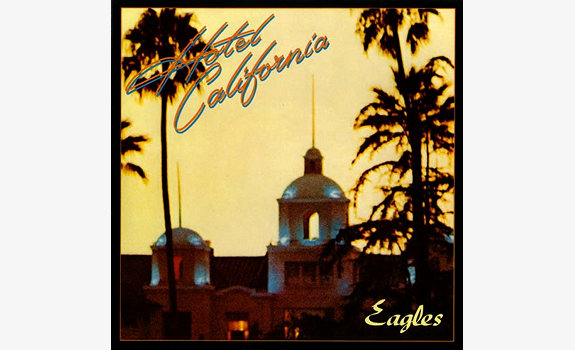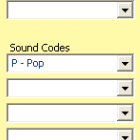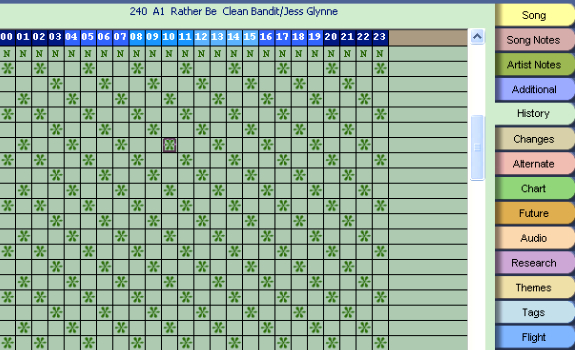Instead of staring yourself blind at song rotation patterns, optimizing your playlist for music flow & variety is more important, says music scheduling and programming expert Robert Johansson.
Following part 1 of this interview series, we’ll now talk about song rotation versus program structures to keep the music flow going. This installment covers why secondary songs are necessary, why no-repeat workdays are questionable, why listening longer is difficult, and why program flow is key (and maybe song history isn’t). “When listeners tune in, they listen now.”
“If you only play power songs,
you haven’t done much research”

Besides your top-testing songs for your target audience in your radio market – like this one often is for Classic Hits formats – secondary songs should be part of your playlist as well (image: Asylum Records / Warner Music Group)
Make tempo coding easy
Spread rules are not just useful for sound coding (e.g. tagging songs as being Pop, Pop-Rock, Rock, etc.). They can also be used for tempo codes – when these make sense. Johansson has recently seen a music database that had no less than 9 different tempo codes. “I asked myself: who will understand this, how will the computer understand this, and what kind of rule settings are you really going to use?” He likes to use a tempo scale from 1 to 5 (where 2, 3 and 4 stand for down-tempo, mid-tempo and up-tempo). Only really slow and extremely fast songs get coded with a 1 or 5. “The 2, 3 and 4 is the easiest way to control the flow of the station. Don’t make it more complicated than it is.”
 Analyze music rotation patterns
Analyze music rotation patterns
A classic example comes from a another station, which was using 30 different sound codes… “Next to that, one third of the library had not a single sound code defined! It was impossible for the software to do something with it. Some power recurrents only played once a week; others played 14, 15 times… Such a difference was not what they had expected. They probably didn’t check the exposure of songs.”
Keep power categories tight
When you look at the song’s rotation pattern, it should be obvious, right?
“Many stations are not looking into it, and – to be honest – many software programs have crappy analyzing tools.” Robert Johansson often sees differences in how often songs (belonging to a certain category) are being exposed. In his opinion, that doesn’t have to be a problem, if you make sure that your power songs come around enough. “When you need to do something, is when your power songs play less than your secondary songs.” He sees powers as concrete blocks at the base of a building, and secondaries as the cement that holds them together. For a solid construction, you need both: “If you only play power songs, you have too many in your library – or you haven’t done much research.” In a music test, the percentages that indicate a song’s popularity, usually fall off pretty quickly. “If you test about 150 songs, the difference in passion between the top 10 and bottom 10 will be really, really big.”
“Repetition images are caused by
bad songs or bad settings”

People probably won’t complain when you play their favorite songs over and over (image: Robert Johansson / RCS)
Compensate for left-out currents
What do you do with a no-repeat workday, like ‘never the same song between 9 and 5’, which can possibly mess up your natural rotation patterns?
“Stations doing ‘no-repeat’ usually don’t play currents frequently. I’ve done examples where we played a lot of currents in the morning until 9 o’clock. We would relax them between 9 and 5, and put in some extra power recurrents or stay currents instead. To be honest, I think that the no-repeat workday is usually not a good thing to do. I do no-repeat weekdays on a Classic Hits format [but] if you play new songs, you play them for a reason. If you’re trying to be famous for playing Pharrell Williams with Happy, what’s the chance that somebody will hear it if you spin it once between 9 and 5? If you’re a Soft AC, repeating your currents once every 7 hours, it could work. But if you’re a Hot AC, spinning your hot currents once every 4 hours, the difference in exposure of contemporary music will be too much.”
 Restrict ‘no repeat’ sweeps
Restrict ‘no repeat’ sweeps
Yeah, and your morning and drivetime will sound really hip – but when people listen in the office, they will hear a totally different station!
“One station did ‘no repeat’ between 9 and 3. To widen the song spread from 4 to 6 hours is no big deal”, Johansson says. “On the other hand: will that really make the difference? It’s also about what other stations are doing.”
Move songs through dayparts
How to deal with the classic complaint of playing the same music all the time?
“Repetition images for ‘playing the same songs over and over’ are caused by bad songs or bad settings in your software. There was a station where you had comments like ‘I heard that song yesterday afternoon, and now I hear it in the morning’. It’s good to have a natural turnover of one day minus 8 or 9 hours, but I don’t think it’s the most important rule. Rather look for sound & tempo balance, and avoid blocking songs from being played in certain hours on the day after or even longer too much.” One client had a policy to play certain songs in each of the 24 hours before re-appearing in the same hour. “I said to them: I don’t remember in which country I was two weeks ago, so why should I remember when this song was played? In some stations, we’ve set the rule that after 10 days, we don’t care about the rotation of this song.”
“Building a long TSL is not about
making people listen longer”

The way to increase Time Spent Listening is to create more tune-in occasions (photo: United for Community Radio)
Avoid too large separations
I cannot even remember what I’ve eaten yesterday!
“Hahaha. Some stations might focus a little bit too much on rotating these songs”, Robert Johansson says, explaining that as a result, the software may not have enough songs available to choose from. “As you wrote in your article [10 Ways To Make Your Music Format Sound GREAT], every 20 minutes should be a perfect slice of your station. That’s really, really important – way more important than saying: this song was played in the same hour, 15 days ago. When listeners tune in, they listen now. The important thing for us is to deliver on expectance, so that the station is top of mind with the listener. Next time they decide to turn on the radio, they should tune in to us. Then we can win a lot. Building a long TSL is not about making people listen longer; it’s about creating more tune-ins. The more often people tune in, the more time they’ll spend listening. You and I love radio, and listen to it a lot, but when average people are in their car and arrive at work, what makes them sit in their car for another 5-10 minutes to listen to radio?”
“Building a long TSL is about creating more tune-ins.”
 Offer more than music
Offer more than music
Well… an entertaining DJ with a break that is so exciting that they want to hear the end of it?
“Yes, but that is not something you do in Selector, Powergold or MusicMaster! You’re right. If you have a very compelling presenter, then you might be able to do that. But I think it’s impossible to change people’s lives by the music we program on the radio.”





Thank you for your comment, and yes, you might also want to look at the market (and everything that works or doesn’t work there) when deciding what should be the best practices to use.
In your experience, which points are extremely good ones?
Where would you put a question mark, and why?
Always good to hear a variety of opinions.
Some extremely good facts to follow, and some questionable ones. Anyhow a great summary and checklist – if you fulfill these, or at least think about the points listed above, you’ll make your station sound better.